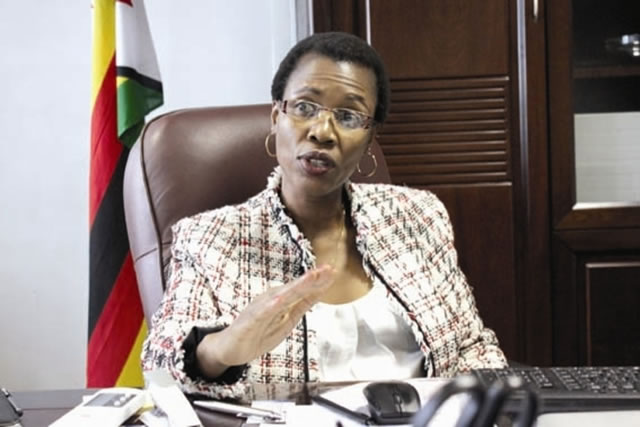Editorial Comment: We can all find land to plant trees

Trees are important for ourselves, our families, our schools, our communities our country and our planet, and most of us need to think more seriously about what we should be doing right now as Zimbabwe enters the tree planting season.
A national day to get people motivated was set on the calendar decades ago, the first Saturday in December, to remind everyone that the start of the rainy season was a good time to plant saplings so they could be established during the next few months when there is plenty of water.
But how many people actually plant a tree?
There have been successes. Most rural households now have a woodlot and some schools are finding that orchards planted some years ago provide a decent flow of fresh fruit. But we obviously have a long way to go.
And there is still a lot of land, not all of it obvious, that can support many more trees without cutting into arable land or urban land we need for houses.
Trees do not have to be planted in large forests, although they are a good idea if suitable land is available. But one of the best wooded areas in urban Zimbabwe has the highest population density of any city, Harare’s Avenues.
All those blocks of flats mean a lot of people, and not much room for trees on the building lots. But the shady avenues planted more than a century ago with flowering trees have created an exceptionally pleasant environment and provide a number of examples of what can be done.
And we can also remember that those shady streets in Harare’s Avenues are a result of an imaginative “food for work” programme initiated by a fanatical Harare parks superintendent after the Boer War when a serious economic depression hit the little town.
He had seedlings, he had shovels and he had destitute men needing something to buy food. He put the lot together, persuaded the Government to give him a bit of money and we still bless his memory.
Outside the inner core of Harare’s older areas, roadside trees become a lot scarcer. The city council has tried, on some highways, to plant but unless some householder was willing to take some responsibility, even just chucking a bucket of water twice a week around the roots of a young tree in the first couple of dry seasons, they soon died.
Harare used to have shaded streets in the central business area, and there are still a few remains of those trees around, but most were chopped down in the 1950s and 1960s to create parking bays, and that is why the then city council had to change the advertising jingle of Harare from “City of Flowering Trees” to “City of Sunshine”, making the best of sun-baked pavements.
An attempt a few years ago to rearrange parking slightly, losing two or so parking spaces in a block while rearranging the markings so that the space created could hold four or five trees, failed miserably, largely because again no one really cared and the touts that then controlled the streets smashed the little saplings since it cut into their trivial incomes.
But the opportunity now exists to have another go. The council has taken control of the streets. The problem of early care can be solved by involving property owners and businesses along each block.
Suitable trees have to be selected, ones without invasive roots, with a long straight trunk and a high canopy when grown. But the Forestry Commission and Harare Parks between them have knowledge and expertise to find the right species.
The same programme would work in the residential suburbs. Again this involves the city council working out where trees can be planted along road verges, since no one needs a spade or pick head shoved into the power mains, the water pipes or the other cabling and the council needs to be able to get to its sewers without chopping down a forest.
But once that has been done householders could be invited to take responsibility for the free saplings delivered, plant them and care for them. You see many proud householders now caring for their verges, so there should be volunteers.
The industrial areas provide a particular opportunity. Most look like deserts. Yet industrialists, more than anyone, have additional responsibilities.
Global action against climate change requires everyone to be thinking about minimising carbon dioxide emissions, or to be more precise, minimising net emissions. Zimbabwe, like all developing countries, needs to expand power generation, needs to build more factories and generally needs to develop.
While solar power and hydro-power can take a big share of the needed extra generation, we will still need to use coal stations, and build more. But there is a fancy phrase, “carbon sequestration”, which simply means locking up the carbon dioxide we generate. And one of the easiest ways to lock up carbon is to plant a tree, or rather lots of trees.
The biggest energy users in Zimbabwe are obviously our industrialists and miners, but almost all of them have what is called corporate social responsibility, and it would not be difficult to include tree planting, tree care and tree protection within that sort of programme. Since a big tree can lock up to half a tonne of carbon, the opportunities exist.
Lining the streets in industrial areas with trees would be a start in urban areas. Again local authorities need to mark the actual line of trees to avoid underground servitudes, but that done most factories could find some way of transferring waste water to irrigating saplings, even if it was just a day labourer once a week with a bucket.
Miners have land that they have mined out, or carefully managed spoil heaps, that are not much use, at least this century, for farming. But tree species exist that can grow on quite bad land with a little fertiliser to get them started, and in the end a few decades of falling leaves and root action will restore mined out land.
Establishing forests on the backfilled sections of an open cast coal mine seems the ultimate example of corporate social responsibility.
First Lady Auxillia Mnangagwa has been getting the tree planting season off to a good start by personally helping schools establish orchards, with multiple aims of providing better nutrition, a source of school income, and a decent shady area.
Even urban schools could follow her example and if land is tight, a row or two or fruit trees along the school boundaries works just as well as planting a field.
So there is a lot more we can all do, as households, communities, schools, businesses and local authorities to reforest even the most urban parts of Zimbabwe. And every extra tree is a gain to ourselves, and to future generations.











Comments